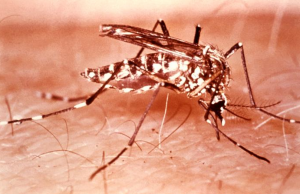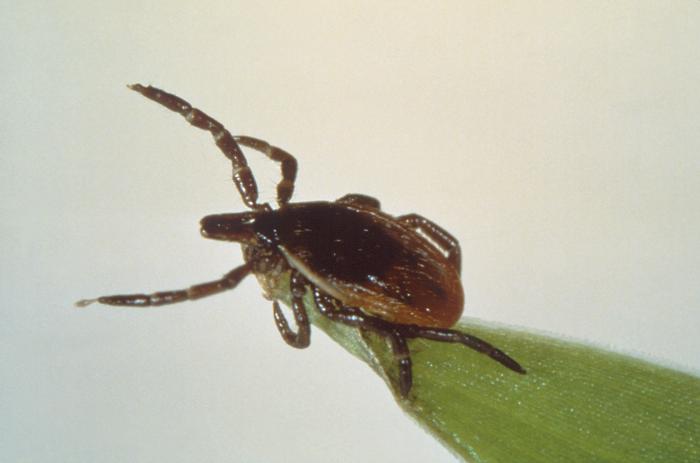Illnesses from mosquito, tick, and flea bites have tripled in the U.S., with more than 640,000 cases reported during the 13 years from 2004 through 2016. Nine new germs spread by mosquitoes and ticks were discovered or introduced into the United States during this time.

These findings are in the latest Vital Signs report by the Centers for Disease Control and Prevention. This is CDC’s first summary collectively examining data trends for all nationally notifiable diseases caused by the bite of an infected mosquito, tick, or flea.
“Zika, West Nile, Lyme, and chikungunya—a growing list of diseases caused by the bite of an infected mosquito, tick, or flea—have confronted the U.S. in recent years, making a lot of people sick. And we don’t know what will threaten Americans next,” said CDC Director Robert R. Redfield, M.D. “Our Nation’s first lines of defense are state and local health departments and vector control organizations, and we must continue to enhance our investment in their ability to fight against these diseases.”
Widespread and difficult to control, diseases from mosquito, tick, and flea bites are major causes of sickness and death worldwide. The growing number and spread of these diseases pose an increasing risk in the U.S. The report found that the nation needs to be better prepared to face this public health threat.
CDC scientists analyzed data reported to the National Notifiable Diseases Surveillance System for 16 notifiable vector-borne diseases from 2004 through 2016 to identify trends. Many infections are not reported or recognized, so it is difficult to truly estimate the overall cost and burden of these diseases. In 2016, the most common tickborne diseases in the U.S. were Lyme disease and ehrlichiosis/anaplasmosis. The most common mosquito-borne viruses were West Nile, dengue, and Zika. Though rare, plague was the most common disease resulting from the bite of an infected flea.

The increase in diseases caused by the bite of an infected mosquito, tick, or flea in the U.S. is likely due to many factors. Mosquitoes and ticks and the germs they spread are increasing in number and moving into new areas. As a result, more people are at risk for infection. Overseas travel and commerce are more common than ever before. A traveler can be infected with a mosquito-borne disease, like Zika, in one country, and then unknowingly transport it home. Finally, new germs spread by mosquito and tick bites have been discovered and the list of nationally notifiable diseases has grown.
Key findings of the report:
- A total of 642,602 cases of disease caused by the bite of an infected mosquito, tick, or flea were reported in the U.S. and its territories from 2004 through 2016.
- The number of reported tickborne diseases more than doubled in 13 years and accounted for more than 60 percent of all reported mosquito-borne, tickborne, and fleaborne disease cases. Diseases from ticks vary from region to region across the U.S. and those regions are expanding.
- From 2004 through 2016, seven new germs spread through the bite of an infected tick were discovered or recognized in the U.S. as being able to infect people.
- Reducing the spread of these diseases and responding to outbreaks effectively will require additional capacity at the state and local level for tracking, diagnosing, and reporting cases; controlling mosquitoes and ticks; and preventing new infections; and for the public and private sector to develop new diagnostic and vector control tools.
“The data show that we’re seeing a steady increase and spread of tickborne diseases, and an accelerating trend of mosquito-borne diseases introduced from other parts of the world,” said Lyle Petersen, M.D., M.P.H., director of the Division of Vector-Borne Diseases in the CDC’s National Center for Emerging and Zoonotic Infectious Diseases. “We need to support state and local health agencies responsible for detecting and responding to these diseases and controlling the mosquitoes, ticks, and fleas that spread them.”
Paul Auwaerter, MD, MBA, FIDSA, President of the Infectious Diseases Society of America (IDSA) released the following statement:
The Vital Signs report data released today by the Centers for Disease Control and Prevention (CDC) show significant increases in vector-borne diseases in the United States highlighting the need for improved strategies to protect patients and public health. Infectious diseases physicians are on the frontlines providing expert care for patients with vector-borne diseases, leading public health responses, and conducting research for new vaccines, diagnostics, and treatments. The Infectious Diseases Society of America (IDSA) recognizes that vector-borne diseases such as Lyme disease and Zika virus disease can devastate patients and their families, causing significant suffering. Time and again, we see patients seeking care that will help ease their suffering. Like our patients, we are looking for answers too. With the best interest of patients in mind, IDSA is committed to promoting the best approaches for prevention, timely and accurate diagnosis, and evidence-based care of all vector-borne diseases.
IDSA is already taking steps to address this serious issue. We urge Congress to provide increased funding for surveillance and prevention of vector-borne diseases, including resources to support research on the most effective methods for preventing tick-borne infections. We are also investigating how climate change may impact the spread of vector-borne diseases so that we can take appropriate actions to protect public health. We also advocate for federal investments in the research and development of new vaccines to prevent Zika, Lyme disease, and other serious vector-borne diseases.
While all possible efforts must be made to prevent vector-borne diseases, we also wish to ensure rapid, accurate diagnosis and optimal treatment for patients who are sickened. We support boosting resources for research and development leading to improved diagnostics for Lyme disease and other vector-borne diseases by the National Institutes of Health and the Biomedical Advanced Research and Development Authority. We also support funding for research to understand better how to safely and effectively treat symptoms that persist in some patients following initial antibiotic treatment for Lyme disease.


9 thoughts on “Zika, West Nile, Lyme and other vector-borne diseases triple in the US over the past decade”